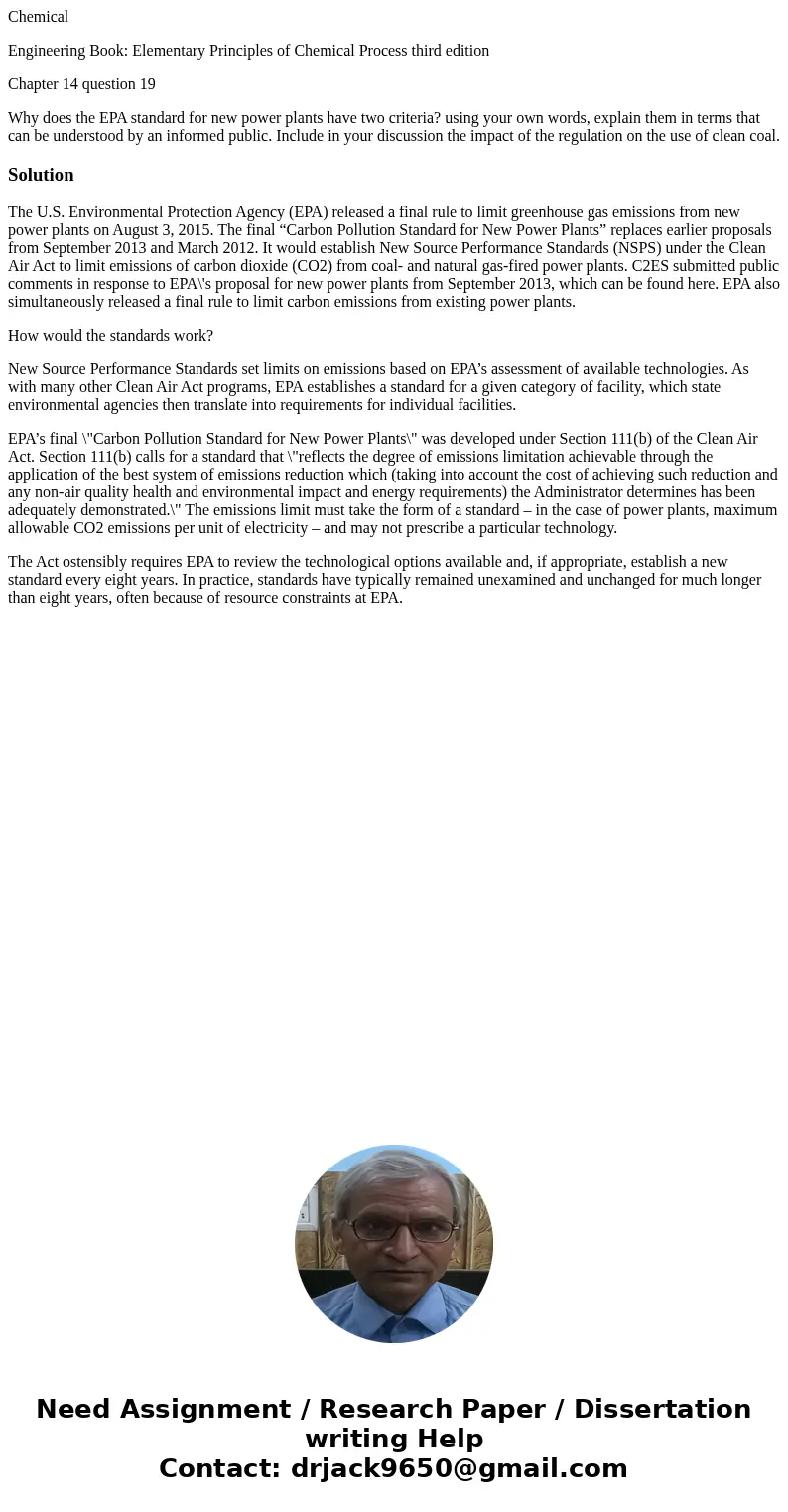Chemical Engineering Book Elementary Principles of Chemical
Chemical
Engineering Book: Elementary Principles of Chemical Process third edition
Chapter 14 question 19
Why does the EPA standard for new power plants have two criteria? using your own words, explain them in terms that can be understood by an informed public. Include in your discussion the impact of the regulation on the use of clean coal.
Solution
The U.S. Environmental Protection Agency (EPA) released a final rule to limit greenhouse gas emissions from new power plants on August 3, 2015. The final “Carbon Pollution Standard for New Power Plants” replaces earlier proposals from September 2013 and March 2012. It would establish New Source Performance Standards (NSPS) under the Clean Air Act to limit emissions of carbon dioxide (CO2) from coal- and natural gas-fired power plants. C2ES submitted public comments in response to EPA\'s proposal for new power plants from September 2013, which can be found here. EPA also simultaneously released a final rule to limit carbon emissions from existing power plants.
How would the standards work?
New Source Performance Standards set limits on emissions based on EPA’s assessment of available technologies. As with many other Clean Air Act programs, EPA establishes a standard for a given category of facility, which state environmental agencies then translate into requirements for individual facilities.
EPA’s final \"Carbon Pollution Standard for New Power Plants\" was developed under Section 111(b) of the Clean Air Act. Section 111(b) calls for a standard that \"reflects the degree of emissions limitation achievable through the application of the best system of emissions reduction which (taking into account the cost of achieving such reduction and any non-air quality health and environmental impact and energy requirements) the Administrator determines has been adequately demonstrated.\" The emissions limit must take the form of a standard – in the case of power plants, maximum allowable CO2 emissions per unit of electricity – and may not prescribe a particular technology.
The Act ostensibly requires EPA to review the technological options available and, if appropriate, establish a new standard every eight years. In practice, standards have typically remained unexamined and unchanged for much longer than eight years, often because of resource constraints at EPA.

 Homework Sourse
Homework Sourse